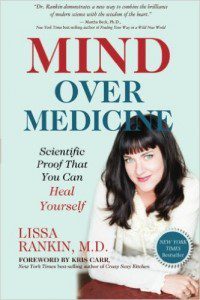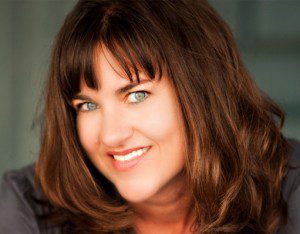Guest writer for Wake Up World
When the British Medical Journal reported in May of 2016 that preventable medical error is the #3 cause of death in the United States, behind only heart disease and cancer, my mentor Rachel Naomi Remen MD and I co-wrote an op-ed piece that we submitted to the New York Times. We thought this was big news and hoped that a newspaper like the New York Times would agree. They never responded to us, so we submitted it to CNN, but they failed to respond too. Almost a year later, and especially in light of what’s currently happening to Obamacare and Trumpcare, it still feels relevant, so I’m going to post it here.
Be prepared. It’s frightening to think that it might not be safe to trust your body in the hands of the current medical system. But fear not. As I wrote in my book The Fear Cure, fear only makes us sicker. Instead, let this be a call to action. Let us drop into our hearts and trust that when all of us join together in sacred activism, we can do hard things with great love, and even behemoth systems like the United States health care system can heal…
[pro_ad_display_adzone id=”110028″]
Are We Really Okay With This?
Op-ed article, written May 2016 by:
—Lissa Rankin, MD, New York Times bestselling author of Mind Over Medicine and The Anatomy of a Calling, and founder of the Whole Health Medicine Institute.
—Rachel Naomi Remen, MD, New York Times bestselling author of Kitchen Table Wisdom and My Grandfather’s Blessings, and founder of The Healer’s Art curriculum.
This week, the venerable British Medical Journal reported a recent study revealing that medical error is the third leading cause of death in America. 250,000 people die each year from causes that are completely preventable and have nothing to do with their disease process. Shocking? You bet. Surprising? Not so much.
Surely those seeking medical care have the right to expect that the system will protect them from preventable harm. Yet these findings document that modern medical care itself poses a grave risk to life, ranking a close third behind heart disease and cancer as the most common cause of death in the United States.
 When alarming statistics like this are unveiled, the knee-jerk response is often to impose greater control in order to prevent medical error; more checks and balances, more rules, more “fail safes” — in other words, more bureaucracy. But what if more bureaucracy actually increases the risk of medical error? What if bureaucracy is actually the problem and not the solution?
When alarming statistics like this are unveiled, the knee-jerk response is often to impose greater control in order to prevent medical error; more checks and balances, more rules, more “fail safes” — in other words, more bureaucracy. But what if more bureaucracy actually increases the risk of medical error? What if bureaucracy is actually the problem and not the solution?
Anyone working in today’s system is aware of the many safety precautions and practices designed to decrease medical error. Many of them have a surreal quality, which tempts one to ask, “How did we end up here?” A classic example is the “Time Out” practice performed before every surgery. Simply described, the surgeon stands ready, scalpel in hand, while someone on the surgical team calls for a “Time out!” The team then halts while the patient’s identification bracelet is checked, the paperwork is reviewed, and the team agrees verbally that the correct surgery is about to be performed on the correct patient. Why is this necessary? Because it’s possible that nobody in the operating room actually knows the patient or the problem that brings them to surgery.
To further decrease the very real possibility of medical error, patients are often given a magic marker prior to anesthesia so they can write a message on their body, preferably on the affected body part. This safety precaution is intended to ensure that they end up with a left hip replacement, rather than a right hip replacement, or God forbid, a pacemaker. Absurd? Yes. Uncommon? No. Effective? Questionable. With 250,000 fatal errors each year and many more that lead to injury but not death, such safety systems are clearly not working.
[pro_ad_display_adzone id=”110030″]
What goes unmentioned in most conversations about safety in medicine is that these safety protocols do not touch the root cause of this public health crisis, which lies in the priorities of the present system and the destructive effect of the economic bottom line on the health care provider-patient relationship. The problem is not a dearth of safety protocols. The problem is that the safety inherent in a genuine relationship between the patient and those who serve the patient has been sacrificed to the economic bottom line. The errors that lead to patient fatalities are rarely the result of lack of skill or training on the part of those who deliver health care. These errors are the outcome of a system-wide practice of prioritizing economic goals above safety goals.
The uncomfortable truth is that safety costs money. In the not so distant past, health care professionals knew their patients intimately. They not only knew their names, what they looked like, and the health issues that plagued them; they also knew what they did for a living, understood their family systems, were familiar with their financial challenges, and were privy to their secrets. Knowing the patient intimately helps the health professional serve the patient and protect him or her from harm. Even a decade ago, all surgeons still routinely visited patients prior to surgery to clarify what was planned, discuss the surgery, answer questions, and lay eyes and hands on the patient. They also visited their patients post-operatively to answer questions, discuss the outcome of the surgery, ensure adequate pain control, ensure that no obvious error had been made, and comfort family members. However, now it is possible for a patient to be operated on by a surgeon who only meets the patient in the operating room, often when the patient is already premedicated with sedatives or already asleep. Post-operative visits are rare and seen as unnecessary.
The problem does not just lie with surgery. Unlike doctors of the past who had genuine relationships with patients and their families, many practicing physicians now work in health care systems which require them to see forty patients a day, many with complex problems requiring the management of multiple medications, whose side effects often interfere with each other. It is not uncommon for patients to be double booked in fifteen minute slots, leaving only seven and a half minutes of time for each patient. All the fail safes in the world cannot make such a system safe. Imagine if your car mechanic had seven and a half minutes to assess and repair a significant problem with your car. Would you be surprised if your car failed on the freeway?
250,000 deaths a year. It is absurd to lay the cause of such an alarming statistic at the door of the health care professional. Few health care professionals would actually choose to practice in the health care provider -patient relationship the system imposes upon them. Such relationships are inherently dangerous.
Protecting patients against danger is built into the training of all health professionals. Within moments of receiving a medical degree, every new doctor speaks aloud a vow to do no harm, often using an oath that goes back thousands of years. People enter the field of health care with the intention to serve and make a positive difference in the lives of others. “Do no harm” is the foundational goal of such people. Yet the system itself does not support or respect this intention. The system does intend to do no harm, but only if it doesn’t cost too much. But doing no harm takes time. Doing no harm costs money. By placing a greater priority on the economic bottom line than on the value of doing no harm, the intention to do no harm is violated and invalidated, often on a daily basis, by the demands of the system. Doing no harm may actually be an impossible goal within the system as it exists today.
The data presented in the British Medical Journal suggests that the present health care system has become inherently untrustworthy. This violates the intention of the dedicated people who work within the system, the ones who enter into the practice of medicine, nursing, and other health care fields in order to be someone patients can trust when they are at their most vulnerable. If you were to ask doctors, nurses, and other health care practitioners to create the health care system, we would have a very different system.
The fact that preventable medical error is the third leading cause of death in America is simply unacceptable. The system is not working, not only for patients in clinics and hospitals, but for all those who serve within these systems and experience daily the conflict between the demands of the system, the regulation of individual practice, and the wish to do no harm. The road ahead is not clear. It is tempting to wonder what would happen if doctors, nurses, and other health care professionals entrusted with the lives of Americans were to just stop. What if we were to say, “Sorry, but I am not willing to put the lives of my patients in jeopardy any longer.” What would happen if we stood up for our deep commitment to do no harm and refused to participate in a system that puts people in jeopardy on a daily basis? What might be possible then?
Related article:
- Occupy Medicine, Anyone? by Lissa Rankin, M.D.
Mind Over Medicine: Scientific Proof That You Can Heal Yourself
The bestselling book by Lissa Rankin, M.D., is available here on Amazon.

We’ve been led to believe that when we get sick, it’s our genetics. Or it’s just bad luck — and doctors alone hold the keys to optimal health. So when Dr. Lissa Rankin’s own health started to suffer, she turned to Western medical treatments, but what she found was that they not only failed to help; they made her worse. So she decided to take matters into her own hands.
Through her research, Dr. Rankin discovered that the health care she had been taught to practice was missing something crucial: a recognition of the body’s innate ability to self-repair and an appreciation for how we can control these self-healing mechanisms with the power of the mind. To better understand this phenomenon, she explored peer-reviewed medical literature and found evidence that the medical establishment had been proving that the body can heal itself for over 50 years.
In this book, you’ll find a radical new wellness model based on Dr. Rankin’s scientific findings. Her unique six-step program will help you uncover where things might be out of whack in your life, and how to trust your inner guidance when making decisions about your health and your life. By the time you finish Mind Over Medicine, you’ll have made your own diagnosis, written your own prescription, and created a clear action plan designed to help you make your body ripe for miracles.
Mind Over Medicine is available here on Amazon.
About the author:
 Lissa Rankin, MD is a mind-body medicine physician on a grass roots mission to heal healthcare, while empowering you to heal yourself. She is the founder of the Whole Health Medicine Institute training program for physicians and healthcare providers, and the New York Times bestselling author of the books Mind Over Medicine: Scientific Proof That You Can Heal Yourself (2013), The Fear Cure (2014), and The Anatomy of a Calling (2015).
Lissa Rankin, MD is a mind-body medicine physician on a grass roots mission to heal healthcare, while empowering you to heal yourself. She is the founder of the Whole Health Medicine Institute training program for physicians and healthcare providers, and the New York Times bestselling author of the books Mind Over Medicine: Scientific Proof That You Can Heal Yourself (2013), The Fear Cure (2014), and The Anatomy of a Calling (2015).
Lissa blogs at LissaRankin.com and created the online community HealHealthCareNow.com. She is also the author of several other books, a speaker, a professional artist, an amateur ski bum, and an avid hiker. She lives in the San Francisco Bay area.
Connect with Lissa on Facebook and Twitter, or visit LissaRankin.com.
Recommended articles by Lissa Rankin:
- Holding Space When Someone Is In Pain
- Relationships on the Spiritual Path
- The “Space Between Stories”
- How to Make Your Body Ripe for Miracles
- Are You “Spiritual But Not Religious?”
- 10 Tips for Fully Feeling What Hurts Right Now, Without Going Insane
- 9 Practical Tips to Help You Find Your Calling
- 10 Fun Ways to Reduce Your Cortisol Levels
- 6 Stories To Make You Believe In The Power Of The Mind To Heal You
- 7 Tips For Finding Your Tribe
- 10 Surprising Things That Trigger “Fight-Or-Flight”
- 8 Signs You’ve Lost Touch with Your Intuition – and 10 Tips to Help You Reconnect
[pro_ad_display_adzone id=”110027″]









